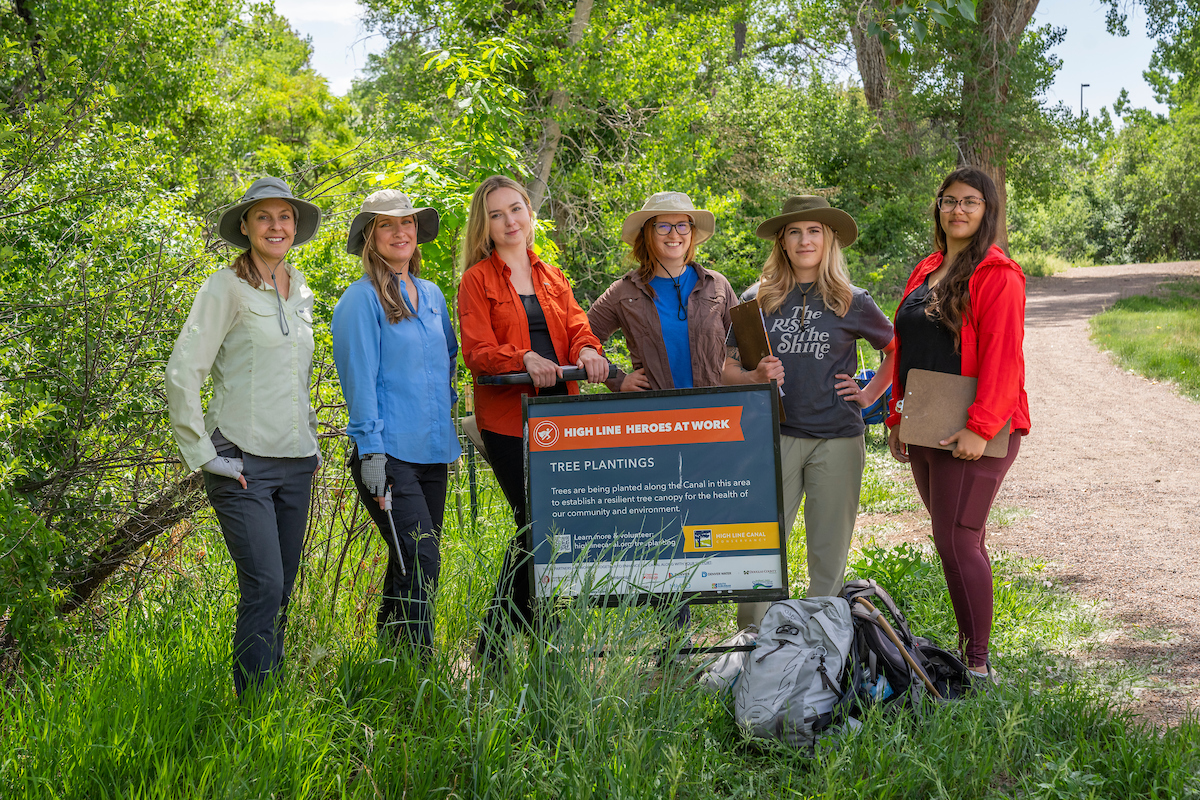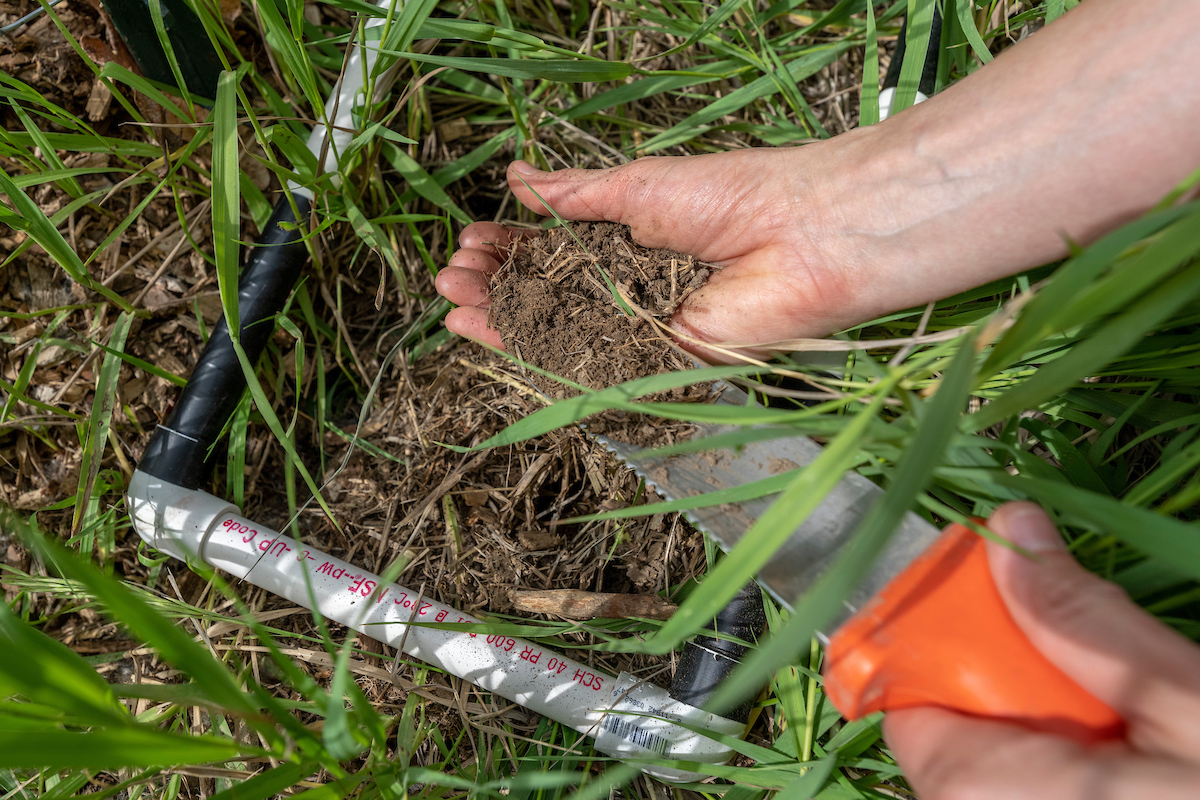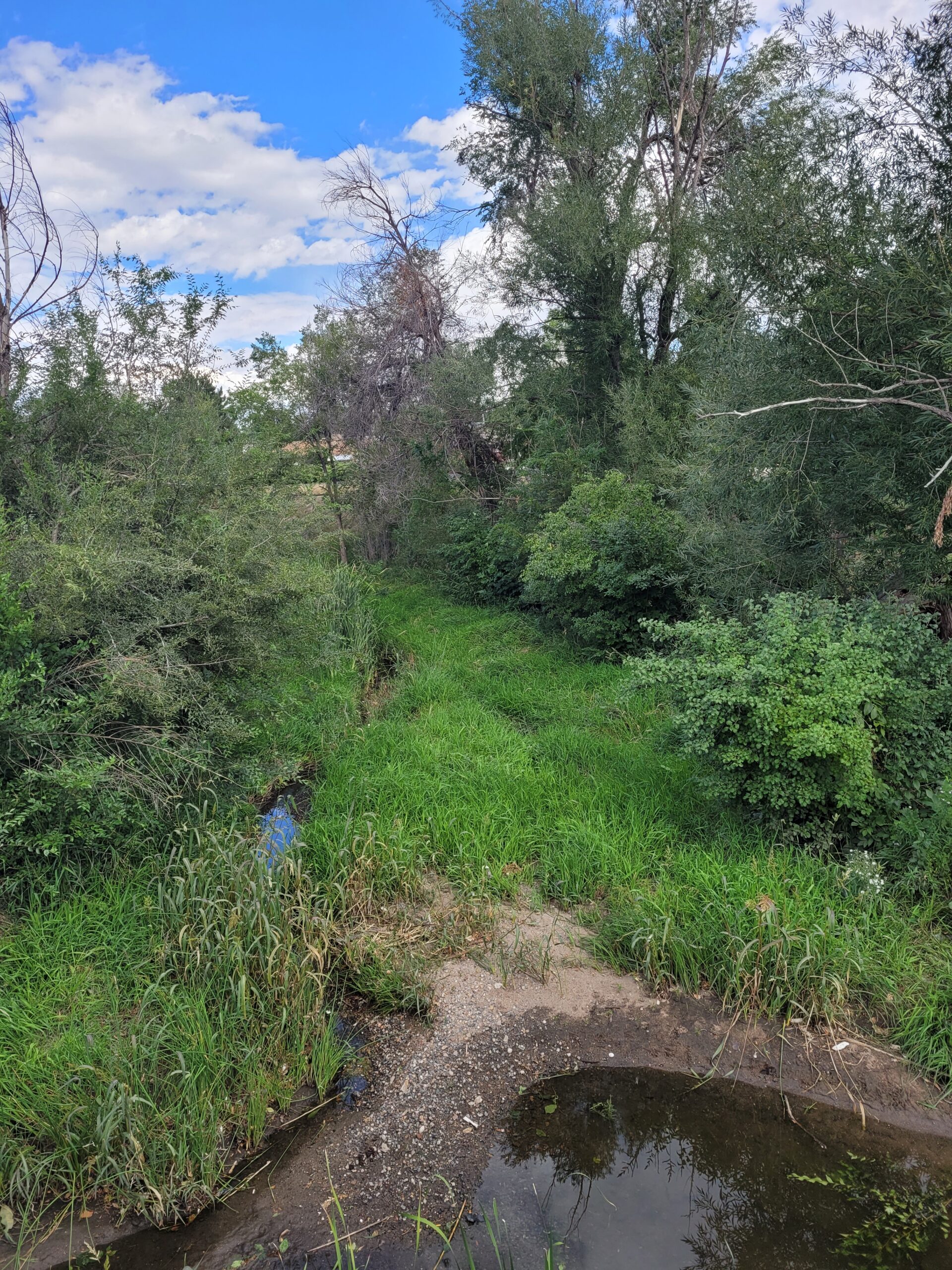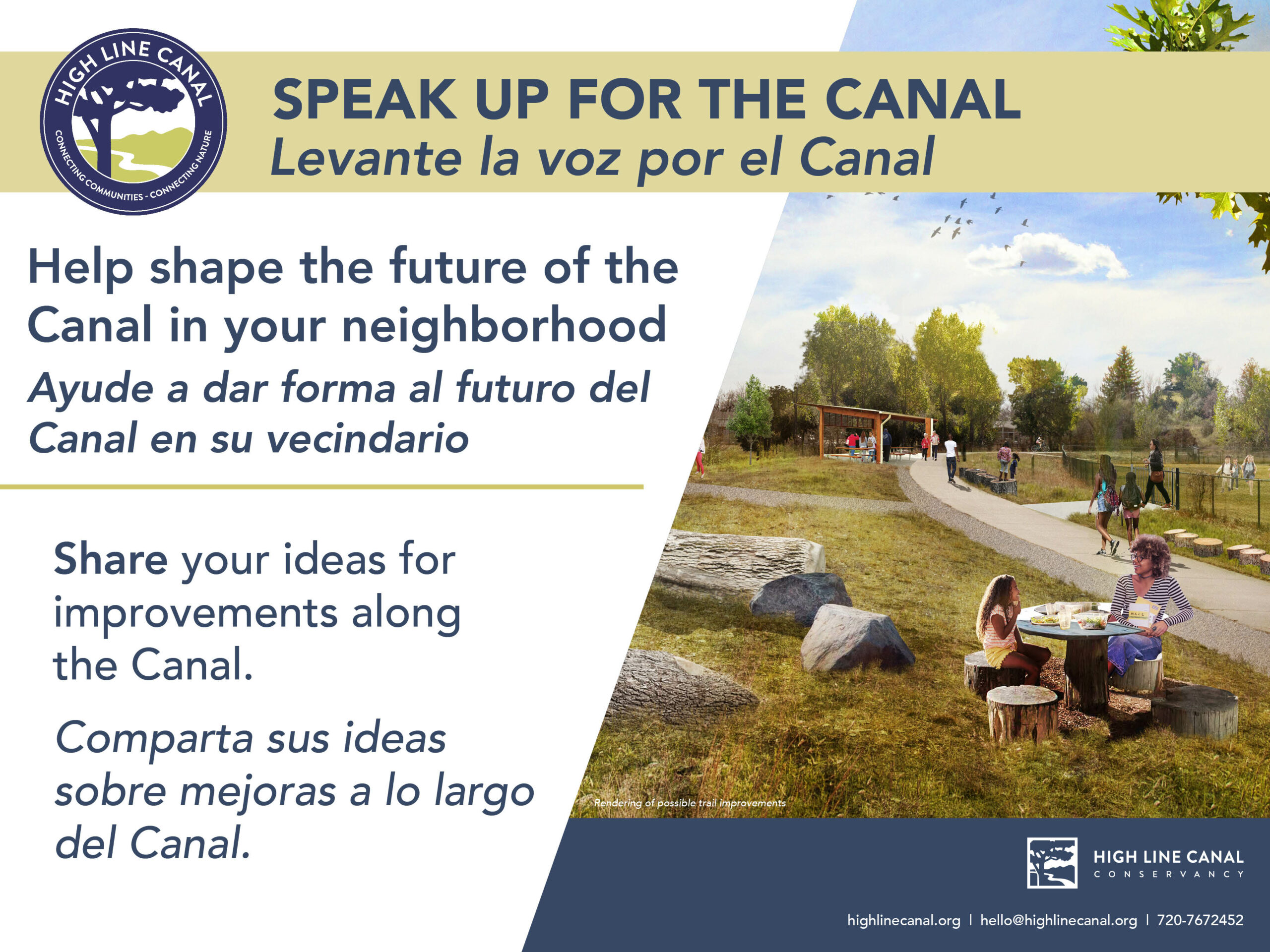Now 140 years old, the 71-mile-long High Line Canal (Canal) is outliving its historic function as an irrigation utility and has taken on new life as a stormwater management system, urban ecological corridor, and regional recreational trail. The Conservancy is partnering with Denver Botanic Gardens (the Gardens) to gain insight into the corridor’s ecology and better understand how the Conservancy and jurisdictional partners can best steward the Canal through this time of transition. The Gardens recently completed a plant and soil assessment along the reach of the Canal near Eisenhower Park that is managed by Denver as green stormwater infrastructure. This research sheds light on how the corridor’s vegetation and soil characteristics will shape green stormwater infrastructure function, and how the plant community may respond as the Canal channel’s primary function shifts from irrigation delivery to stormwater management.
Stormwater reach managed by Denver’s Department of Transportation Infrastructure
This research is led by Dr. Chrissy Alba, Assistant Research Scientist at the Gardens. By inventorying understory vegetation and assessing soil characteristics, Dr. Alba identified key vegetation and soil factors that will shape the Canal’s function as green stormwater infrastructure. The high-level findings of the assessment are:
- There are areas along the reach with high cover of litter and bare ground rather than vegetation. In these locations, additional plantings may support better green stormwater infrastructure function by increasing water infiltration, bank stability, and capacity for pollutant removal.
- The reach is dominated by four cool-season perennial grasses (smooth brome, reed canary grass, quack grass, and orchard grass) and one mid-sized shrub (buckthorn). There is also appreciable cover of several wetland species and ruderal introduced plants. Each group of plants has a different potential function in a GSI setting, which is highlighted in the full report.
- Soil health along the reach is good according to all indicators assessed, with little evidence of degradation that could compromise green stormwater infrastructure function.
Photos provided by: The Garden’s Chrissy Alba & Scott Dressel-Martin.
Read Dr. Alba’s full report to learn more about how the Canal’s plant community and soil characteristics may contribute to, or detract from, the Canal’s ability to slow, spread, and sink stormwater.
With the completion of the plant and soil assessment, the Gardens is tackling a new research project along the Canal that will inform the Conservancy’s efforts to establish the next generation of trees on the corridor. The Conservancy is partnering with the Gardens for a longitudinal study of the health of newly planted trees on the Canal corridor. The research will relate tree health to microhabitat characteristics of planting locations (such as light availability, competition from surrounding plants, soil texture, and distance to the Canal channel). The study will also compare the health of trees planted within reaches formalized for stormwater management to those planted outside of stormwater project areas to draw any notable conclusions. This research will inform best practices for planting on the Canal by identifying the microhabitat factors that most strongly shape sapling success. The Gardens collected baseline data in summer 2022 with seed funding from the University of Colorado Denver, assessing 225 trees planted by the Conservancy (175) and Greenwood Village (50) in 2021. The Conservancy is funding the second year of data collection and working with the Gardens to secure funding to continue this longitudinal research. As the Conservancy and jurisdictional partners work to plant over 3,000 trees (an average of 50 trees per mile) on the Canal over 15 years, the findings of this research will be incorporated into planting and watering strategies to ensure new trees are planted strategically to maximize survival while realizing lasting benefits for trail users and the environment. Stay tuned for more about the Gardens’ work on the Canal!











